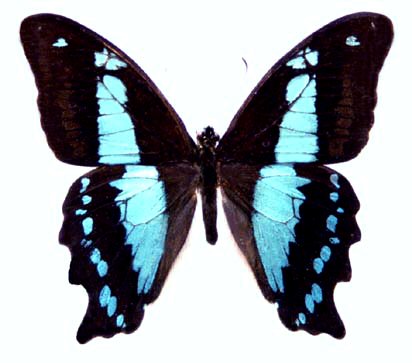
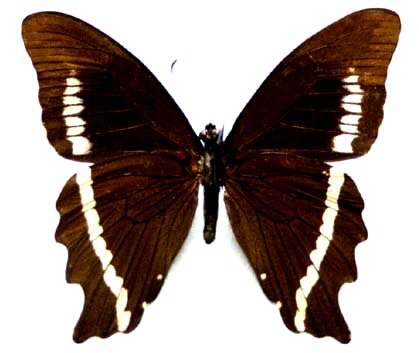
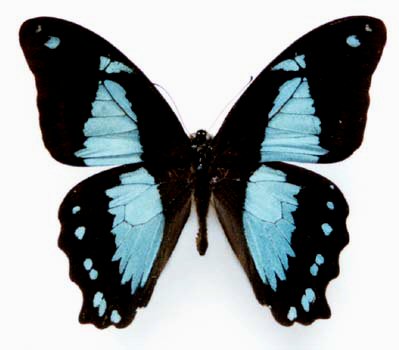
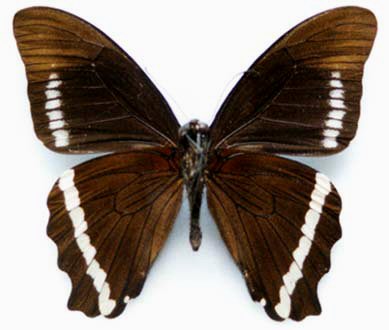
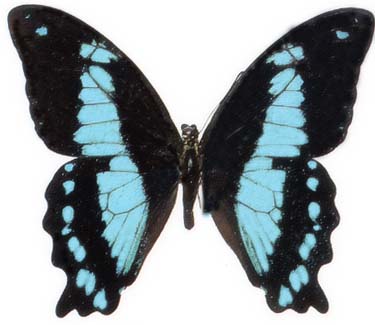
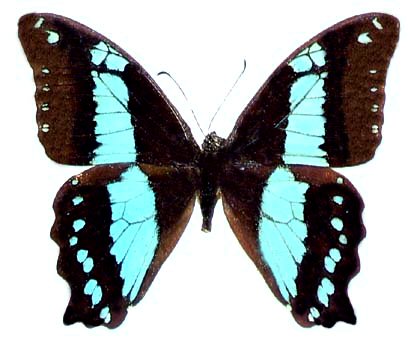
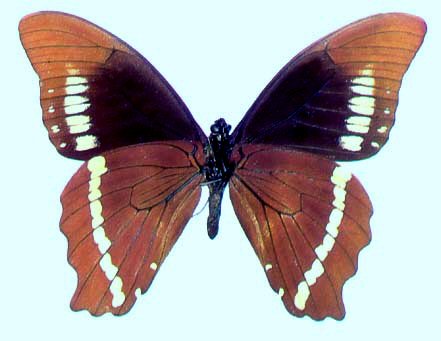
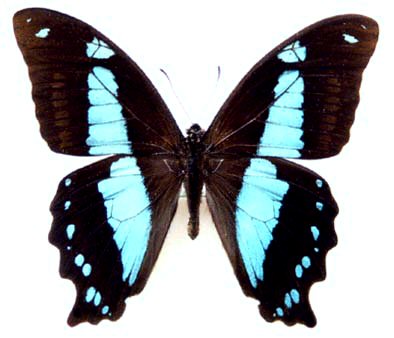
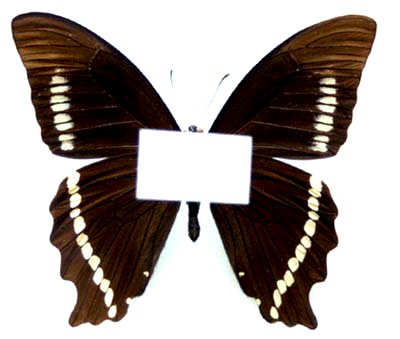
 |
 |
| Masumbai, Usambara, Tanzania; Jan 1970 ssp usambaraensis | Masumbai, Usambara, Tanzania; Jan 1970 ssp usambaraensis |
 |
 |
| Mraru, Coastal Prov. SE Kenya ssp tieta | same data verso |
 |
|
| Mt Meru Tanzania 2000 m ssp magdae (=brontes) | Chyulu Hills, S Kenya ssp desmondi |
 |
 |
| Ufipa plateau, SW Tanzania ssp ufipa | Ufipa plateau, SW Tanzania ufipa verso |
 |
 |
| Misuku Hills, N Malawi ssp?? verso | Misuku Hills, N Malawi ssp?? verso |
Fairly common through east Africa, though ssp tieta
(from the Tieta hills, Kenya) has been reported as threatened, and ssp
magdae
is apparently uncommon. According to Larsen ("The butterflies of Kenya,")
however, this species is common and in no danger, and thrives even away
from its native forest habitat. If this is the case, the encroachment of
humanity will not have as a great an impact in the near future on
this species as stated in Collins et al. Papilio magdae (1961) and
P.
brontes (Godman, 1885) are synonymous and have the same type locality
(Mt Kilimanjaro). Note the variation in marginal hind wing spots. Some
specimens of tieta have "double" spots similar to the usumbara male
shown above.
The specimen at the bottom represents the race from
the Ufipa plateau of SW Tanzania, and according to Jan Kielland who has
spent time dissecting their genitals and observing the species in the wild,
it represents a full species, Papilio ufipa. I am not convinced,
but you are free to decide for yourself.